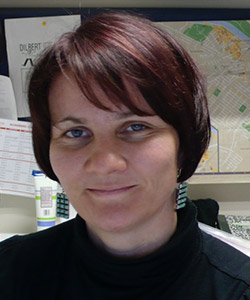EOAS Member Directory

Silke Severmann
Modern and ancient biogeochemical cycles of trace metals and their isotopes
Cook Campus
School of Environmental and Biological Sciences
Dept of Marine and Coastal Sciences (DMCS)
Dr. Severmann often describes her research interests as being stuck between a rock and a wet place: her starting point are the sediments at the interface between the water column above and the geological archive below. She wants to understand how geochemical proxies are formed and preserved, and how we can read and interpret them – think CSI Terra Oceana. She wants to know what goes into the sediments, but also how macro and micronutrients get recycled back into the water column, feeding the surface ocean from deep below. Oxygen is often the gate keeper of these nutrient fluxes in and out of the sediments. Generally speaking, the amount of oxygen present is regulated by biology and by the physical environment, especially temperature. Transition metals and their isotopes are particularly well suited to track changes in the amount of oxygen in the environment because their solubility is a function of ambient oxygen concentrations. She is researching to see how changes in the biogeochemical cycling of nutrients and metals are affected by—or have an effect on—the biological evolution and on changes in the physical environment, including the climate.


